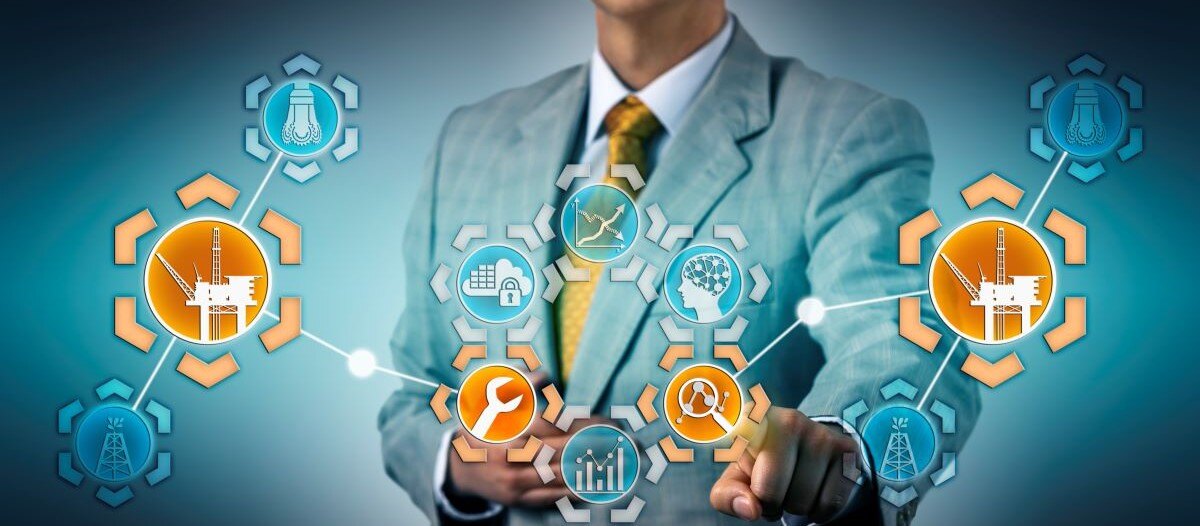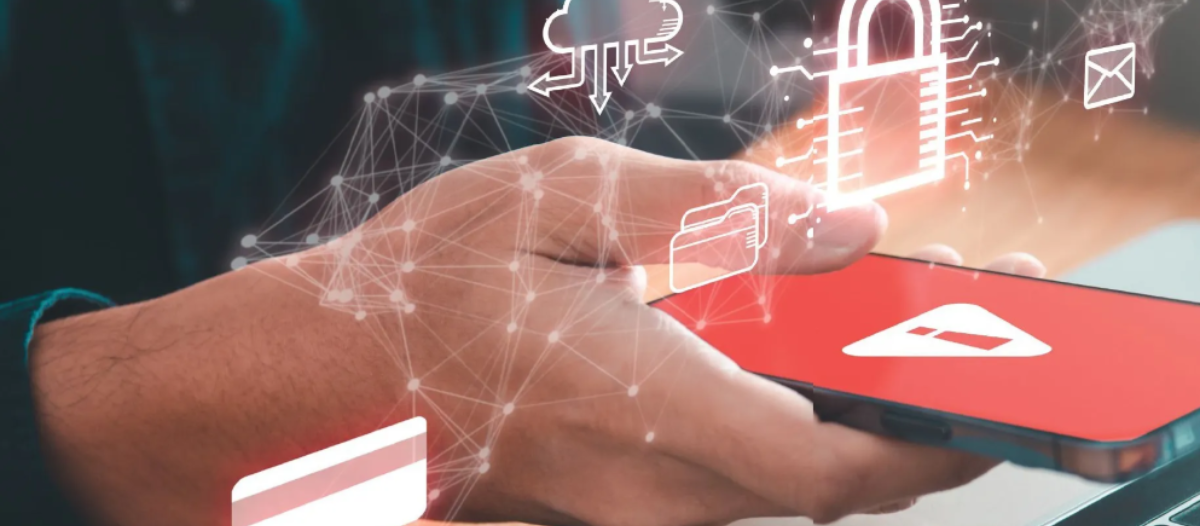Digital Twins for Building Operations
Definition, purpose & the shapes they take on

As the Internet of Things (IoT) continues to transform interactions with the physical world, businesses are seeking innovative ways to integrate these technologies into their operations. The dominant concept as positioned in this context is the digital twin. Digital twins can come in various shapes and forms. In fact, there exist multiple implementations, or shapes, so to speak. Each provides merit.
Defining digital twins
It is good practice to define a principle before discussing it. Despite dozens of definitions for digital twins, one good one can be found in the United Kingdom, which is probably the only country that has constituted a national digital twin program, supported by the government.
Digital twins are realistic digital representations of physical assets that can be used to monitor and predict performance, feeding out insights and interventions. These insights lead to better interventions and unlock real-world value from assets through financial savings, improved performance and services, and better outcomes for society.

There are some interesting conclusions to draw from a definition like this one:
- A digital twin needs a physical object to represent
This implies that in the context of buildings, digital twins emerge for the first time when a building is being constructed, as this is when the building becomes a physical object. - Monitoring performance implies that digital twins in the built environment are dominantly oriented toward tracking building operations. Connectivity to operating technologies like BMS and the use of IoT in general are hence a key component of digital twins in FM.
What shapes can a digital twin take on then?
With this definition in mind, we can evaluate the various shapes (implementations) of digital twins, their merit and drawbacks.
Model-centric digital twins
The most well-known shape of digital twins is the one that has a model of the building at its heart.
 The attraction of this implementation is immediately clear to the viewer. The example shows the physical structure of the building combined with behavioral data of its systems and spaces. This implementation augments the professionals working with it in their ability to analyze and understand situations as occurring.
The attraction of this implementation is immediately clear to the viewer. The example shows the physical structure of the building combined with behavioral data of its systems and spaces. This implementation augments the professionals working with it in their ability to analyze and understand situations as occurring.
To adopt a digital twin implementation like this one, there are some aspects to evaluate, specifically for building operations.
A prerequisite, of course, is the availability of an up-to-date model. This requires FM professionals to adapt their reconstruction projects to a BIM-centric approach. BIM models represent information on the physical structure. If that information becomes incorrect, the model loses its value and users will lose their trust in the digital twin itself.
Each individual model needs an association to BMS/IoT operational data that will describe its condition and operation. As tools become available to make those connections, they will need to be maintained over the years.
One needs a trained professional to access the digital twin, look at its information and decide whether to act. When one is running a large portfolio of buildings, this represents an investment in labor. Timely identification of anomalies is dependent on individuals paying specific attention.
Non-model-centric digital twins
A fundamentally different implementation stems from the industrial context, from manufacturing.
A prominent example of this is General Electric (GE), a pioneer in digital twins for monitoring and repairing jet engines. In their white paper, “The Digital Twin: How Intelligent Machines Learn and Grow,” GE explains that a digital twin is a virtual replica of a physical asset, such as an aircraft engine, that is connected to the physical world through sensors.
The digital twin of a jet engine allows for real-time monitoring of its performance and condition, enabling early detection of any issues and predictive maintenance. GE developed a system that allows for the collection and analysis of data from digital twins across a fleet of aircraft engines.
The case here is that GE did not dominantly put a model of the engine at the heart of their digital twin strategy. At the center of this implementation is IoT to monitor the engine and process that data to identify and respond to anomalies.
In this concept GE is effectively creating a digital twin as a type of mini application. Each digital twin mini application represents the effective state of an individual engine as it is flying around the world at any time. By real-time analysis of the data coming into this digital twin, it can detect anomalies and initiate in-time interventions to keep all passengers and crew safe.
It is quite understandable that GE did not put a model at the heart of its digital twin approach. They have thousands of planes in the air. It would not be feasible to have staff inspect each engine model to identify anomalies or maintenance needs. That would imply looking at thousands of models at the same time!
 Returning to the built environment, digital twins of this mini application type exist today.
Returning to the built environment, digital twins of this mini application type exist today.
In the case shown, a digital twin is monitoring the consumption profile of a building in terms of energy and water. The logic in the digital twin evaluates readings as coming in, for instance comparing them with thresholds to identify data such as energy waste at night when the building is unused.
Conceptually, this digital twin is a mini application monitoring the ecological footprint of an individual building. It effectively runs autonomously, generating responses only when the data coming into it provides a reason to do so.
In this fashion, one building can be running several digital twins, each monitoring different aspects of the building condition and its performance.
Digital twins of this type can be viewed as mini applications, each using internal logic to evaluate the data to detect events and anomalies and automatically generate a response. This is called fault detection and diagnosis (FDD) and system response automation (SRA).
This combination provides a powerful potential.


Automation is at the heart of this implementation of digital twins. By automatically generating system responses, it is effectively the building itself that is calling in human support to deal with events and anomalies.
Is it a case of either-or?
Should one choose for either model-centric digital twins or for non-model-centric digital twins?
Certainly not. Both approaches have their inherent merit and investment profiles. On top of this, they can be combined. The advice again is not to look to technology first but to evaluate the problems one needs to address, then decide in what fashion these problems can be dealt with most efficiently.
Business benefits & market adoption
While digitization of the many assets involved in the construction and management of a building has marched steadily forward, the unification of these assets into a sole source digital twin has been slow and challenging. Survey results include a variety of reasons for this pace of adoption and point toward three main contributors: lack of a solid business case, minimal support from management and a void of expertise in the field.
The first two contributors are clearly linked, as a solid business case would certainly garner support from management. The third factor, lack of expertise, follows directly from this lack of support, and given a solid business case, would be quickly addressed by hiring the appropriate personnel with digital twin experience. So, the primary question at hand is: what benefits does a true digital twin offer from both the architectural, engineering and construction () industry and the facility management perspective?
The digital twin of a physical asset should be thought of as the sole source of truth common to both the AEC team, the owner and the FM. Once this role is embraced, the value added by implementing digital twins becomes quite clear.
When asking high-level managers and executives about the role of digital twins in their different jobs, regardless of specialty, the digital twin can be equally useful. Research demonstrates that the core utility of digital twins is equally valued by facility managers, designers, owners and the like.
From the AEC perspective, it is important to consider the continued industry shift toward design, build and operate projects. Gone are the days of throwing a project over the fence during a hand-off phase and hoping that any unresolved issues go with it. AEC firms are now committed to facilitating a project’s success through construction and beyond.
With digital twins, AEC firms can overcome traditional handover problems by centralizing all design data and eliminating the hassle-full and error-prone process of moving a project from one digital platform to another. In addition, all stakeholders and different specialized teams can simultaneously collaborate during every phase of the project timeline. This improves efficiency, builds trust in the data (due to early involvement of owners), reduces rework cost and allows for a more agile environment in which the project can evolve dynamically to meet any changes in requirement or specification. AEC firms can also capitalize on digital twins by delivering them to clients as part of the completed work asset. The extra effort required to properly build the twin can be promoted as an additional, specialized service that adds significant value to future building operations.
From the FM perspective, the business case for adopting digital twins is more straightforward. In large part, the value proposition comes from the increased efficiency of centralized record keeping coupled with the prospect of real-time and preventive maintenance based on sensor data.
The best business case for digital twins, however, can be made when the AEC firm creates a rich and accurate model, then hands it off to the owner and FM team for further life cycle management. As with any operational framework, starting with quality data, then continuing with adherence to core principles and best practices will bear the most fruit over the life of the asset.

Ted Ritter, IFMA Fellow has worked and travelled extensively throughout North America, Europe and Asia. He is the Principal of LMI360, a company that solely supports organizations that support the built environment. He is the global chair of the IFMA Technology Community, past president of the Greater Phoenix Chapter and a past chair of IFMA Americas’ Advisory Board. He has more than 30 years of experience in facility operations and project management. He is a co-author of “The Facility Manager’s Guide to Information Technology,” author of multiple articles and has contributed to more than 100 presentations on best practices regarding the use of FM technology, sustainability and brand management.

Erik Jaspers, IFMA Fellow has more than 40 years of IT experience. For the last 24 years he has led Planon, the leading smart building management software vendor. Having held senior management positions in developing Planon's software solutions, he is currently working on product strategy and innovation policies. He has contributed to multiple publications on IT and FM subjects, including IFMA publications "Work on the Move" (2011, 2016, 2021), "Technology for Facility Managers" (2012, 2017), GEFMA publications “CAFM-Handbuch" (2018) and "BIM in Immobielenbetrieb" (2022). He has authored articles on technology for FM and is a regular speaker at real estate and FM conferences around the world. Jaspers is a member of the IFMA EMEA Board, member of the IFMA IT Community leadership team and special advisor to the IFMA Foundation Board of Trustees.
Read more on Technology , Real Estate and Emerging Topics
Explore All FMJ Topics









